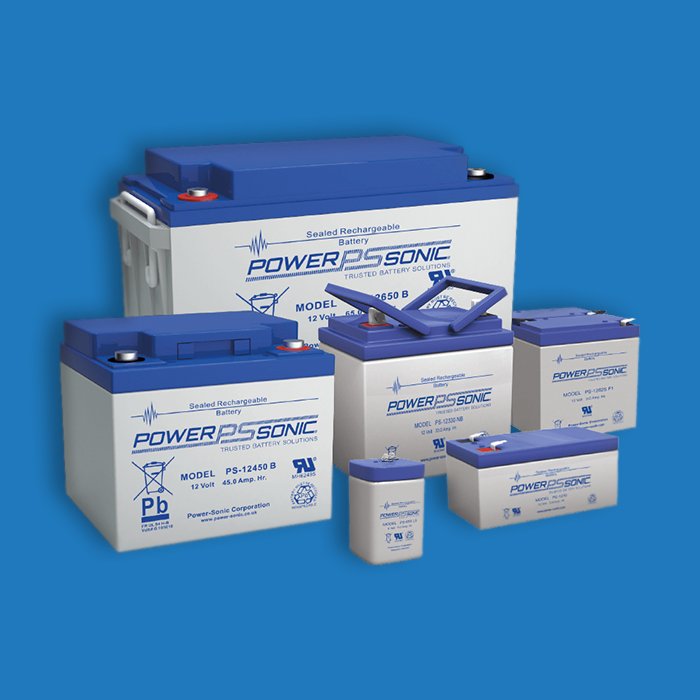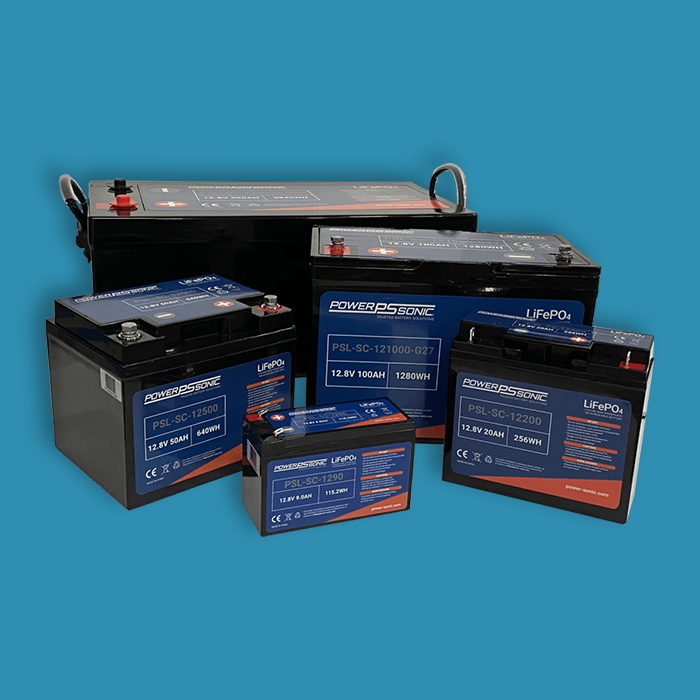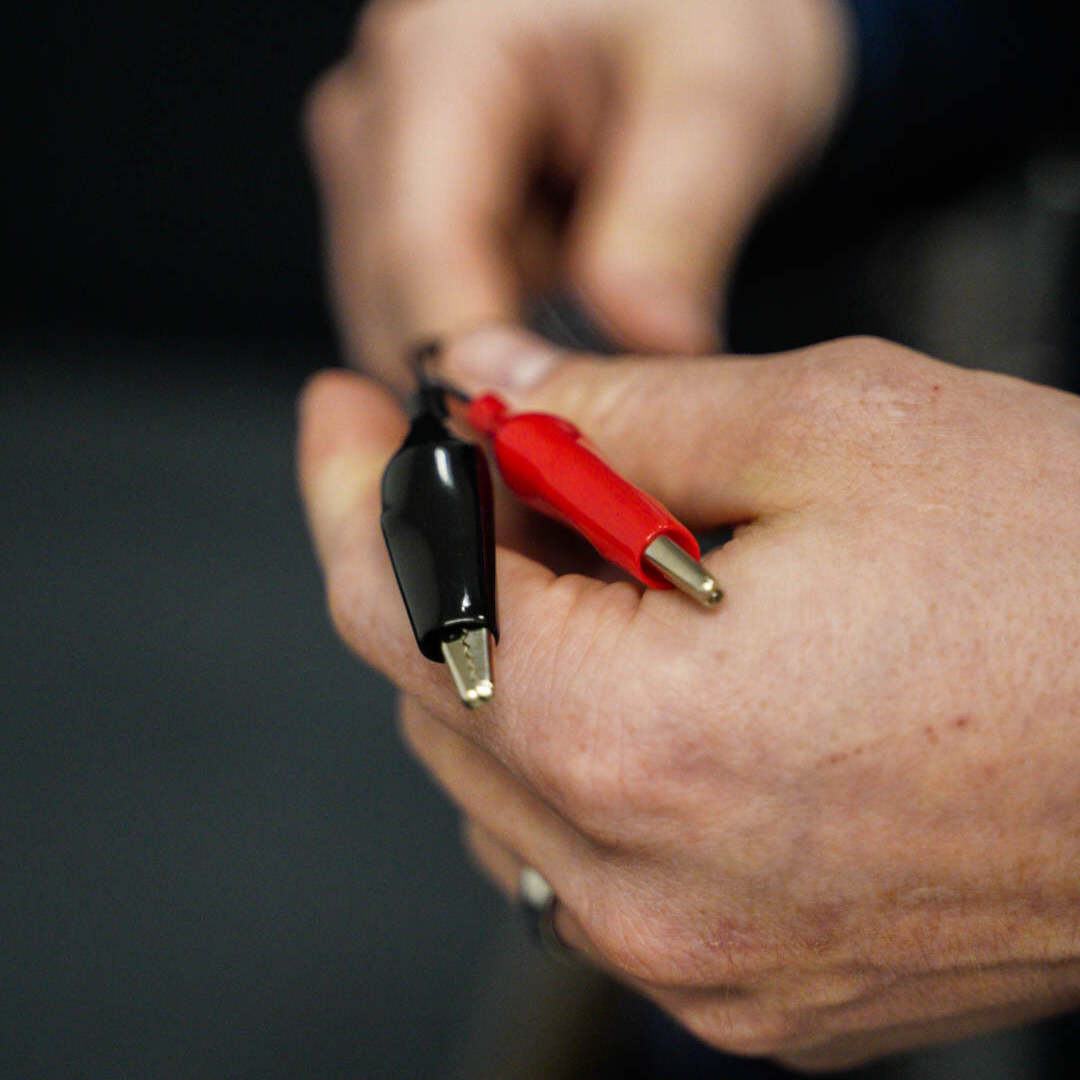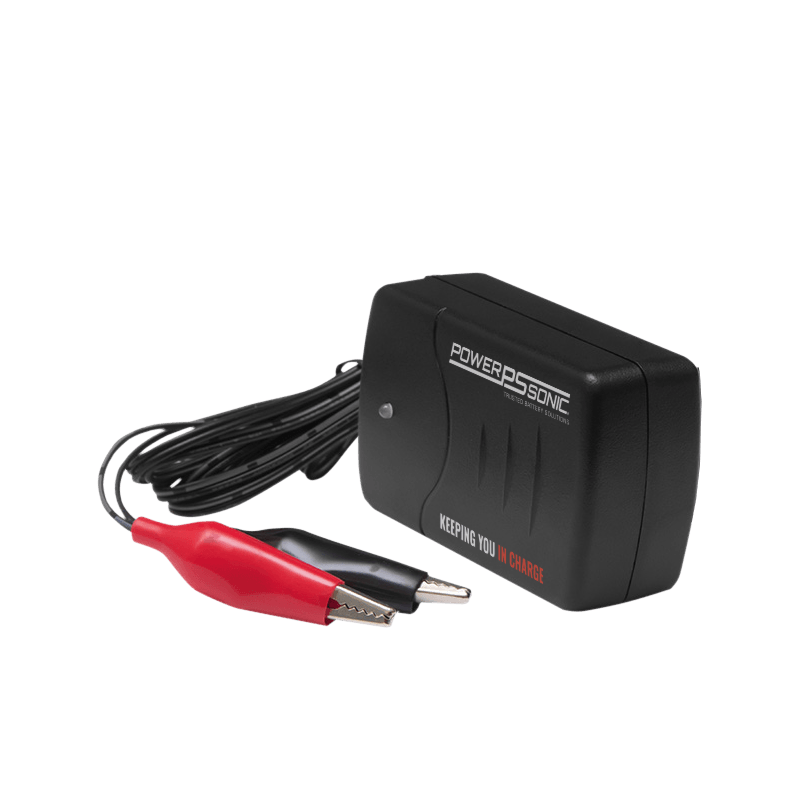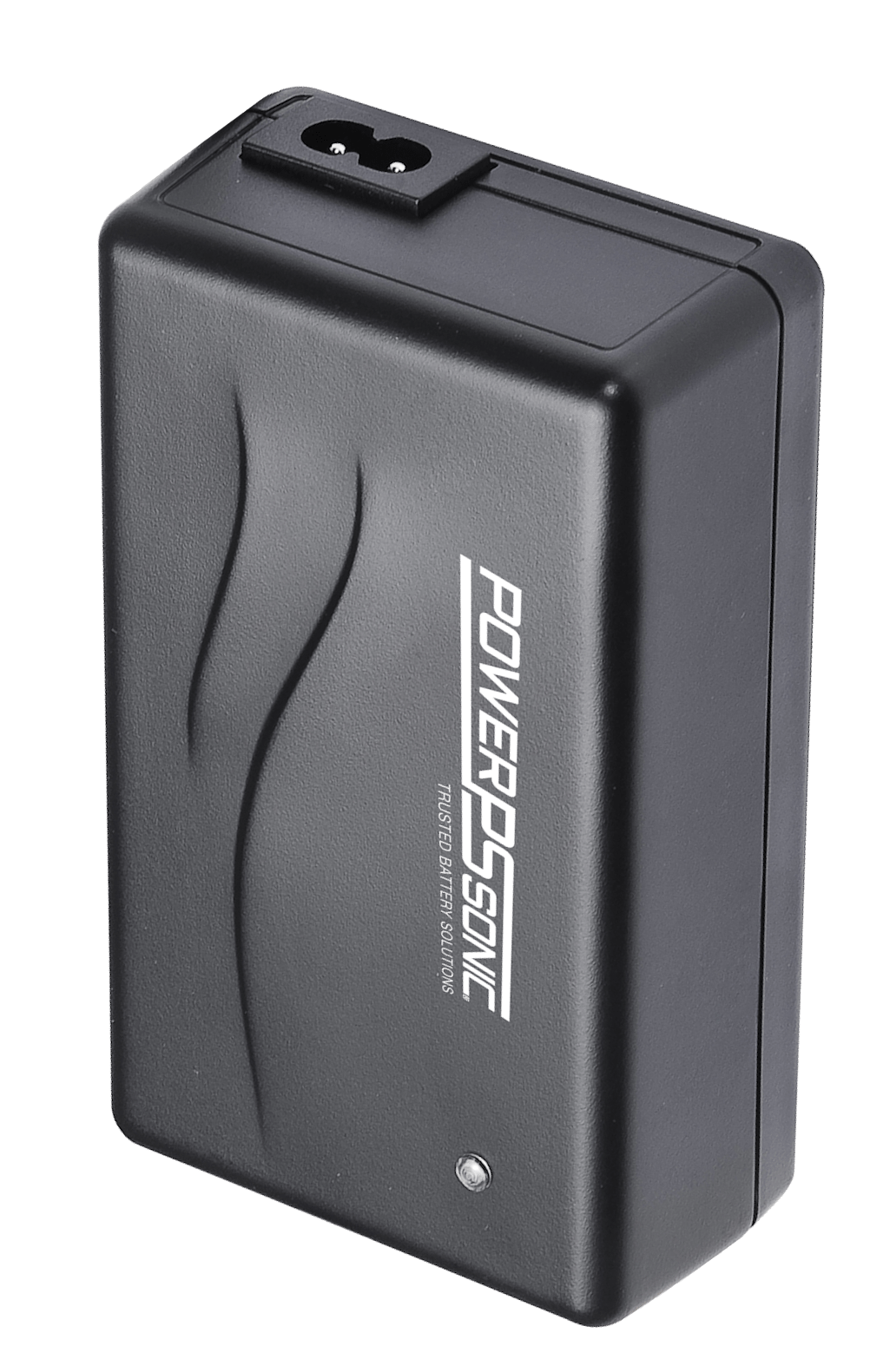If you’ve recently purchased or are researching lithium iron phosphate batteries (referred to lithium or LiFePO4 in this blog), you know they provide more cycles, an even distribution of power delivery, and weigh less than a comparable sealed lead acid (SLA) battery. Did you know they can also charge four times faster than SLA? But exactly how do you charge a lithium battery, anyway?
Power Sonic recommends you select a charger designed for the chemistry of your battery. This means we recommend using a lithium charger, like the LiFe Charger Series from Power Sonic, when charging lithium batteries.
CAN A LEAD ACID CHARGER CHARGE A LITHIUM BATTERY?
As you will learn in this blog, there are many similarities in the charging profiles of SLA and lithium. However, extra caution should be exercised when using SLA chargers to charge lithium batteries as they can damage, under charge, or reduce the capacity of the lithium battery over time. There are many differences when comparing lithium and SLA batteries.
SEALED LEAD ACID (SLA) BATTERY CHARGING PROFILE
Let’s go back to the basics of how to charge a sealed lead acid battery. The most common charging method is a three-stage approach: the initial charge (constant current), the saturation topping charge (constant voltage), and the float charge.

In Stage 1, as shown above, the current is limited to avoid damage to the battery. The rate of change in voltage continually changes during Stage 1 eventually beginning to plateau when the full charge voltage limit is approached. The constant current/Stage 1 portion of the charge is crucial before moving onto the next stage. Stage 1 charging is typically done at 10%-30% (0.1C to 0.3C) current of the capacity rating of the battery or less.
Stage 2, constant voltage, begins when the voltage reaches the voltage limit (14.7V for fast charging SLA batteries, 14.4V for most others). During this stage, the current draw gradually decreases as the topping charge of the battery continues. This stage terminates when the current falls below 5% of the battery’s rated capacity. The last stage, the float charge, is necessary to keep the battery from self-discharging and losing capacity.
Stage 3 is used if the battery is being used in a standby application, the float charge is necessary to ensure the battery is at full capacity when the battery is called upon to discharge. In an application where the battery is in storage, float charging keeps the SLA battery at 100% State of Charge (SOC), which is necessary to prevent sulfating of the battery that therefore prevents damage to the plates of the battery.
LIFEPO4 BATTERY CHARGING PROFILE
A LiFePO4 battery uses the same constant current and constant voltage stages as the SLA battery. Even though these two stages are similar and perform the same function, the advantage of the LiFePO4 battery is that the rate of charge can be much higher, making the charge time much faster.

Stage 1 battery charging is typically done at 30%-100% (0.3C to 1.0C) current of the capacity rating of the battery. Stage 1 of the SLA chart above takes four hours to complete. The Stage 1 of a lithium battery can take as little as one hour to complete, making a lithium battery available for use four times faster than SLA. Shown in the chart above, the Lithium battery is charged at only 0.5C and still charges almost 3 times as fast! As shown in the chart above, the Lithium battery is charged at only 0.5C and still charges almost 3 times as fast!
Stage 2 is necessary in both chemistries to bring the battery to 100% SOC. The SLA battery takes 6 hours to complete Stage 2, whereas the lithium battery can take as little as 15 minutes. Overall, the lithium battery charges in four hours, and the SLA battery typically takes 10. In cyclic applications, the charge time is very critical. A lithium battery can be charged and discharged several times a day, whereas a lead acid battery can only be fully cycled once a day.
Where they become different in charging profiles is Stage 3. A lithium battery does not need a float charge like lead acid. In long-term storage applications, a lithium battery should not be stored at 100% SOC, and therefore can be maintained with a full cycle (charged and discharged) once every 6 – 12 months and then storage charged to only 50% SoC.
In standby applications, since the self-discharge rate of lithium is so low, the lithium battery will deliver close to full capacity even if it has not been charged for 6 – 12 months. For longer periods of time, a charge system that provides a topping charge based on voltage is recommended. This is especially important with our Bluetooth batteries where the Bluetooth module draws a very small current from the battery even when not in use.
LITHIUM BATTERY CHARGING CHARACTERISTICS
Voltage and current settings during charging
The full charge open-circuit voltage (OCV) of a 12V SLA battery is nominally 13.1 and the full charge OCV of a 12V lithium battery is around 13.6. A battery will only sustain damage if the charging voltage applied is significantly higher than the full charge voltage of the battery.
This means an SLA battery should be kept below 14.7V for Stage 2 charging and below 15V for lithium. Float charging is only required for an SLA battery, recommended around 13.8V. Based on this, a charge voltage range between 13.8V and 14.7V is sufficient to charge any battery without causing damage. When selecting a charger for either chemistry, it is important to chose one that will stay between the limits listed above.
Chargers are selected to match the capacity of the battery to be charged, since the current used during charging is based on the capacity rating of the battery. A lithium battery can be charged as fast as 1C, whereas a lead acid battery should be kept below 0.3C. This means a 10AH lithium battery can typically be charged at 10A while a 10AH lead acid battery can be charged at 3A.
The charge cut-off current is 5% of the capacity, so the cutoff for both batteries would be 0.5A. Typically, the terminal current setting is determined by the charger.
Universal chargers will typically have a function to select the chemistry. This function chooses the optimal voltage charging range, and determines when the battery is fully charged. If it is charging a lithium battery, the charger should shut off automatically. If it is charging an SLA battery, it should switch to a float charge.
Lithium batteries replacing sealed lead acid in float applications
It is very common for lithium batteries to be placed in an application where an SLA battery used to be maintained on a float charge, such as a UPS system. There has been some concern, whether this is safe for lithium batteries. It is generally acceptable to use a standard constant voltage SLA charger with our lithium batteries, as long as it adheres to certain standards.
If using a constant voltage SLA charger, the charger must meet the following conditions:
– Charger must not contain a de-sulfating setting
– Fast/Bulk charge voltage of 14.7V
– Recommended float charge voltage of 13.8V
As a side note, some smart or multi-stage SLA chargers have a feature that detects open circuit voltage (As a side note, some smart or multi-stage SLA chargers have a feature that detects open circuit voltage (OCV). An over-discharged lithium battery that is in protection mode will have an OCV of near 0V. This type of charger would assume this battery is dead and would not try to charge it. A charger with a lithium setting will try to recover or “wake up” an over-discharged lithium battery that is in protection mode.
Long term storage
If you need to keep your batteries in storage for an extended period, there are a few things to consider as the storage requirements are different for SLA and lithium batteries. There are two main reasons that storing an SLA versus a Lithium battery is different.
The first reason is that the chemistry of the battery determines the optimal SOC for storage. For an SLA battery, you want to store it as close to possible as 100% SOC to avoid sulfating, which causes a buildup of sulfate crystals on the plates. The buildup of sulfate crystals will diminish the capacity of the battery.
For a lithium battery the structure of the positive terminal becomes unstable when depleted of electrons for long periods of time. The instability of the positive terminal can lead to permanent capacity loss. For this reason, a lithium battery should be stored near 50% SOC, which equally distributes the electrons on the positive and negative terminals. For detailed recommendations on long term Lithium storage, check out this guide regarding storage of Lithium batteries.
The second influence on storage is the self-discharge rate. The high self-discharge rate of the SLA battery means that you should put it on a float charge or a trickle charge to maintain it as close as possible to 100% SOC to avoid permanent capacity loss. For a lithium battery, which has a much lower discharge rate and doesn’t need to be at 100% SOC, you may be able to get away with minimal maintenance charging.

Recommended battery chargers
It is always important to match your charger to deliver the correct current and voltage for the battery you are charging. For example, you wouldn’t use a 24V charger to charge a 12V battery. It is also recommended that you use a charger matched to your battery chemistry, barring the notes from above on how to use an SLA charger with a lithium battery. Additionally, when charging a lithium battery with a normal SLA charger, you would want to ensure that the charger does not have a desulfation mode or a dead battery mode.
If you have any questions about an existing charger’s capability with one of our products, please give us a call or send us an email. We would be happy to assist you with your charging needs.

